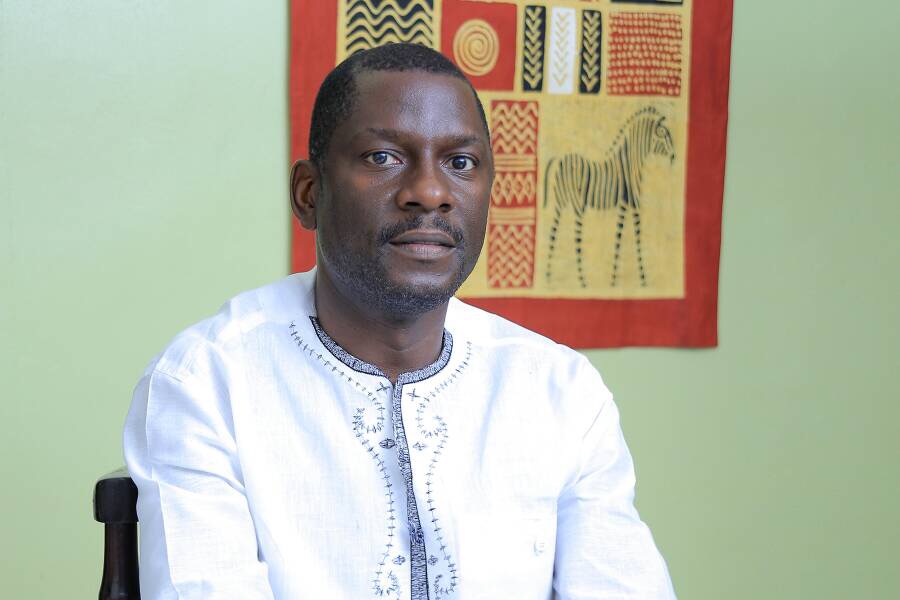Kampala, Uganda – Researchers in Uganda and Tanzania have proposed technology solutions for Forest Restoration of East Africa’s forests.
In the study conducted by Scholars; Ibrahim M. Fanuel Silas Mirau, and Damian Kajunguri, focused on the conservation of forest biomass and the forest-dependent wildlife population.
They are affiliated with the Department of Applied Mathematics and Computational Science at the Nelson Mandela African Institution of Science and Technology in Tanzania and the Department of Mathematics at Kabale University in Uganda.
The researchers focused their study on the conservation of forest biomass and the forest-dependent wildlife population, suggesting the utilization of cutting-edge technologies to accelerate reforestation efforts.
“Among these innovations are the use of drones in the seeding process and the adoption of genetically modified seeds designed to thrive in adverse environmental conditions and promote accelerated growth,” the recommend.
Titled: Conservation of forest biomass and forest–dependent wildlife population: Uncertainty quantification of the model parameters, the study has been published in the Heliyon a monthly peer-reviewed mega journal covering research in all areas of science, the social sciences and humanities, and the arts.
The research aimed to address uncertainties in the model parameters within the context of human population dynamics and activities. Their comprehensive investigation, conducted across multiple departments and institutions, sheds light on the complex relationship between forests, human populations, and wildlife species, ultimately striving for sustainable forest management while acknowledging the challenges posed by increasing population pressures.
Background
The world’s ecosystems, including here in Uganda, are facing unprecedented challenges due to the relentless expansion of the human population and its associated activities.
Among these pressing issues is the degradation of forest biomass, which not only contributes to the reduction of forested areas but also poses a grave threat to the survival of countless wildlife species.
This threat is exacerbated by the intensification of intraspecific competition among these species.
In response to this critical situation, this groundbreaking study has been able to unveil innovative strategies to conserve forests and protect the wildlife that relies on these vital ecosystems.
The study
Using both quantitative and qualitative methods, the study was conducted within the framework of human population dynamics and its associated activities.
It used a non-linear mathematical model to understand the delicate balance between conserving forest resources, meeting the demands for forest products, and ensuring the survival of wildlife species in the face of mounting human population pressures.
One of the key takeaways from this research is the significant impact of economic measures in alleviating population pressure on forest resources.
The study proposes various economic interventions, including property rights, market charge systems, fiscal instruments, and livelihood support, to reduce the strain on these invaluable resources.
“These measures serve the dual purpose of meeting the livelihood needs of individuals dependent on forest resources while simultaneously easing the pressure on these ecosystems,” the researchers argue.
Drones and GMO Seeds
From their findings, the researchers propose cutting-edge technological advancements which can play a pivotal role in Forest Restoration efforts.
Among these innovations are the use of drones in the seeding process and the adoption of genetically modified seeds designed to thrive in adverse environmental conditions and promote accelerated growth.
“These strategies are expected to significantly increase the overall density of forest biomass,” they write.
To ensure the effectiveness of these proposed measures, the study identifies the most influential parameters in the model.
These include the implementation rate of economic measures, the depletion rate of population pressure due to these measures, the rate of technological efforts, and the growth rate of forest biomass due to technology adoption.
“These findings emphasize the importance of implementing these measures over a sustained period and highlight the need for comprehensive assessments of their effectiveness,” they recommend.
Climate Crisis
The degradation of forests is a critical global concern that necessitates immediate attention and comprehensive scientific investigation.
The study’s findings underscore the pressing need to balance the preservation of forest resources with the growing demands of the human population.
By implementing economic measures and harnessing technological advancements, it becomes possible to achieve sustainable forest management while safeguarding the livelihoods of forest-dependent communities and the survival of countless wildlife species.
This research is a significant step forward in addressing the complex interplay between forests, human populations, and technological solutions for addressing the current climate crisis in the world.
Uganda’s Forest Facts
Uganda’s forest cover is estimated to be approximately 9.3% of its total land area but the country loses 2% of this to deforestation every year.
However, this forest cover data keeps changing over time due to deforestation, reforestation, and conservation efforts addressed in this study.
Deforestation remains one of the primary threats to Uganda’s forests. It occurs due to activities such as logging for timber and fuelwood, expansion of agricultural land, and infrastructure development.
The other causes include illegal logging, urbanization, mining, fires, climate change, and illegal Wildlife Trade in forests that disrupt ecosystems and threaten the country’s biodiversity.
For more on this story, visit: https://doi.org/10.1016/j.heliyon.2023.e16948
About The Author
Arinaitwe Rugyendo
Rugyendo is the Founder and Editor-in-Chief of ResearchFinds News. He’s an accomplished journalist with a rich background in the media industry in Uganda. With over two decades of experience, Rugyendo has held various roles including cab reporter, Bureau Chief, Managing Editor, and Digital Media Editor at renowned publications such as Daily Monitor and Red Pepper. Throughout his career, he has demonstrated a commitment to delivering high-quality journalism and staying at the forefront of media trends. In addition to his journalistic pursuits, Rugyendo is currently pursuing a Ph.D. in Journalism and Communication at Makerere University. He has been recognized for his outstanding leadership and commitment to social change as a Desmond Tutu Fellow and Crans Montana New Leader. Rugyendo also serves as the Chairman of Young Engineers Uganda and Uganda Premier League, showcasing his dedication to promoting excellence and growth in various fields. With a passion for driving innovation and pushing boundaries in media, Rugyendo continues to make significant contributions to the industry. His vast experience, academic pursuits, and leadership roles make him a respected figure in the Ugandan media landscape.

















